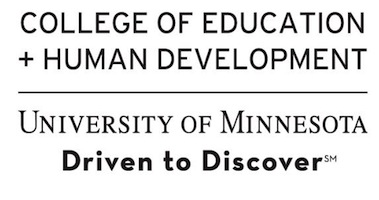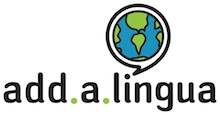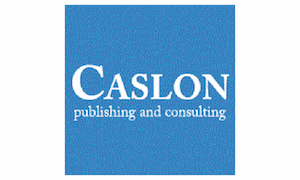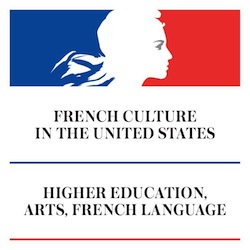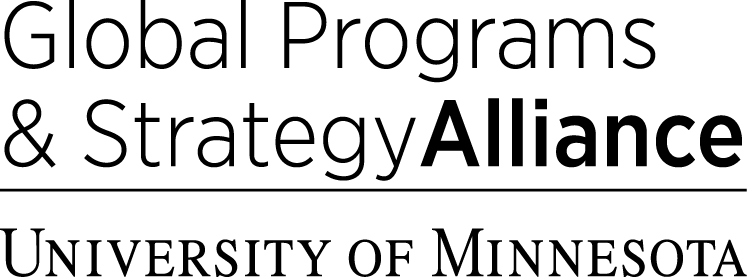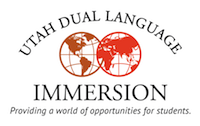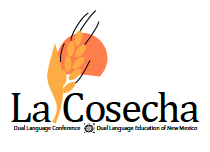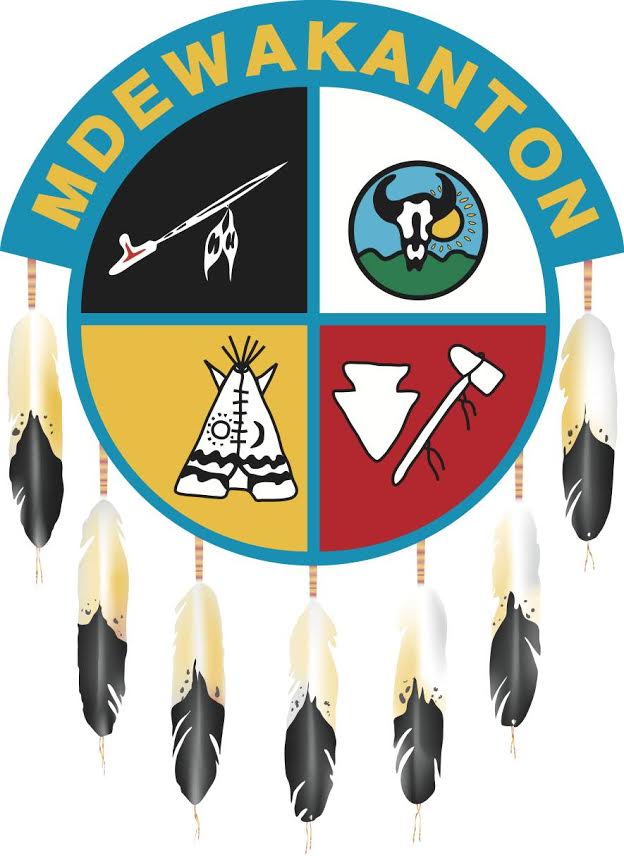Call for Proposals
The DEADLINE has past—thank you for your interest in the conference!
Please consider attending the conference in October.
Sixth International Conference on Immersion and Dual Language Education:
Connecting Research and Practice Across Contexts
October 20–22, 2016
Hyatt Regency Hotel
Minneapolis, MN, USA
Conference Description
Immersion and dual language education continue to evolve as highly effective program models for launching students on the road to bi- and multilingualism and intercultural competence. School-based immersion, bilingual, and dual language programs involve a minimum of 50% subject-matter schooling through a second, world, heritage, or indigenous language at the preschool and elementary levels (PreK–5/6). Secondary or post-secondary continuation programs for elementary immersion/dual language graduates include a minimum of two subject courses.
Program models include:
-
One-Way Second/Foreign Language ImmersionServe primarily language-majority* students (e.g., English speakers in the U.S., Finnish speakers in Finland) who learn the curriculum through a second or foreign language such as Mandarin, Spanish, or Swedish. Examples include French immersion programs in Canada, Mandarin Chinese in the U.S., Swedish immersion in Finland, and English immersion in Japan.
*We acknowledge that the terms "language-majority" and "language-minority" do not correspond well to all sociocultural contexts but have elected to use them for lack of better alternatives. -
Co-Official/Regional Language ImmersionServe a mixed student population learning a regional (often minority autochthonous) language that may or may not have co-official status. Examples include Irish immersion in Ireland, Basque immersion in Spain, and Breton immersion in France.
-
Two-Way Bilingual ImmersionServe a combined student population of language-minority* (e.g., Spanish speakers) and language-majority (e.g., English speakers) students who learn the curriculum through both languages. Examples include Spanish-English programs in the U.S. and Russian-Estonian programs in Estonia.
*We acknowledge that the terms "language-majority" and "language-minority" do not correspond well to all sociocultural contexts but have elected to use them for lack of better alternatives. -
One-Way Developmental Bilingual EducationServe language-minority* students (e.g., Spanish speakers in the U.S.) or simultaneous bilinguals who learn the curriculum through the minority language and English. Examples include Spanish-English programs in the U.S.
*We acknowledge that the terms "language-majority" and "language-minority" do not correspond well to all sociocultural contexts but have elected to use them for lack of better alternatives. -
Indigenous Language ImmersionServe primarily students with Native/aboriginal heritage and strive to revitalize endangered indigenous languages and cultures. Students learn the curriculum through the indigenous language and also receive instruction in the majority language of the context (e.g., English). Examples include Hawaiian or Ojibwe immersion in the U.S. and Māori immersion in New Zealand.
While each model targets distinct sociocultural contexts and educational needs, all embrace language, literacy, and culture development through subject-matter learning with a high degree of language intensity. Under the leadership of the Center for Advanced Research on Language Acquisition (CARLA), University of Minnesota, the Sixth International Conference on Immersion and Dual Language Education will bring these models together to engage in research-informed dialogue and professional exchange across languages, levels, learner audiences, and contexts.
CARLA is currently seeking proposals for papers, discussion sessions, laptop poster sessions, and symposia on aspects of immersion and dual language education related to four conference strands:
This strand focuses on the theoretical and practical questions that underpin instructional and assessment practices in a variety of immersion and dual language settings. It showcases innovative classroom-oriented research and teacher practices that address the challenges of promoting and assessing language proficiency, biliteracy across the curriculum, and rigorous content mastery through the immersion or partner language.
Critical Questions:
- What scaffolding strategies are needed to make a rigorous curriculum accessible to all learners through the immersion or partner language?
- How can teachers capitalize on engagement strategies to maximize students' opportunities for language production?
- How can teachers leverage digital technologies to enhance biliteracy development?
- What culturally relevant instructional and assessment practices can teachers adopt to foster inclusiveness in diverse classrooms?
- How do teachers effectively use formative and summative assessment to monitor student progress and inform instruction?
- How do teachers personalize learning to meet the needs of all students in a variety of immersion and dual language classrooms?
- How can teachers most effectively integrate a focus on language during subject-matter instruction?
- How can teachers effectively collaborate across languages to promote biliteracy development and also across language and content areas to promote coherence across the curriculum?
- What forms of intervention are effective for students who are experiencing learning difficulties?
- How do common core curriculum standards impact pedagogical and assessment practices in the classroom?
This strand focuses on the important goals of engaging communities in immersion, dual language, and language revitalization efforts and building relationships through and across cultural differences. Within this strand, topics to be addressed include: exploring how participant identities are constructed in immersion and dual language contexts; examining issues of social justice, equity, and belonging in the larger sociopolitical arena; developing and understanding biculturalism and/or multicultural competencies; and providing measures that practitioners can implement at program and classroom levels to help the field better embrace diversity in our increasingly interconnected world. Proposals may include critical approaches at the classroom, school, district, and/or community levels.
Critical questions:
- How do students develop greater intercultural sensitivity and multilingual identities through sustained program participation?
- What are some ways teachers successfully position themselves and their students as they teach both language and culture?
- How do distinct immersion and dual language programs define, articulate, and teach culture?
- What are ways to successfully address societal inequities among students of different socioeconomic, linguistic, racial, and ethnic backgrounds?
- How does immersion and dual language education impact the identity of its participants and their communities?
- What are some innovative approaches to bringing parent communities into schools?
- How do we assess the effectiveness of cultural pedagogies in the classroom? How does the community perceive immersion and dual language programs in their midst?
- How do students perceive their own culture/identity and their relationship to students of other cultural backgrounds in the classroom and in their communities? How are these perceptions transformed through dual language education?
- How do immersion and dual language programs negotiate cultural innovation and cultural tradition?
Immersion and dual language programs must address a number of important issues in program design and implementation as well as educator development in order to successfully serve students and their families. Although all programs have a number of features in common, they also have distinct considerations. Educators need to understand how to align program design and implementation features effectively with specific purposes, learner populations, and community needs. This strand welcomes sessions related to program models, educator preparation and development, program administration and leadership, student diversity and recruitment, and other internal and external challenges pertaining to program design, implementation, sustainability and expansion, and assessment and program evaluation.
Critical questions:
- What challenges exist for leaders of various program models and in what ways have leaders effectively overcome these challenges?
- What school-wide assessment and program evaluation methods and tools can be used to support and strengthen programs?
- What research-informed instructional designs and sustainability and expansion plans have proven effective in articulating programs to promote a preK–20 sequence?
- How do programs assure accessibility for and address the needs of students from diverse backgrounds (socioeconomic, linguistic, racial, cultural, developmental)?
- What skills, dispositions, and knowledge need to be developed in teacher and administrator preparation and in-service professional development programs? How are they best developed?
- How do teacher education and professional development experiences need to be modified to address the needs of immersion teachers across a range of levels (from pre-school to tertiary immersion)?
- How are teachers best prepared to address the needs of at-risk learners?
School, district, state and national policies and public opinion impact immersion and dual language education. As a result, there is an ongoing need to identify, educate, and engage stakeholders to monitor policy development, advocate for high-quality program design and implementation, and communicate with the public about these programs and their outcomes. This strand addresses important questions regarding language policy and planning; legislative mandates; state, national, and international advocacy initiatives; and strategies for expanding support for immersion and dual language education.
Critical questions:
- How do school, district, state, and federal standards and policies contribute to or impede high-quality design and implementation of various types of programs?
- What strategies can stakeholders use to create, implement, and sustain effective programs, practices and policies?
- What are effective ways to communicate with stakeholders about the relationship between program outcomes and high-quality implementation?
- How can programs meet legislative initiatives while maintaining fidelity to the model?
- What policies and practices exist that serve to limit or expand the participation of specific groups of students or teachers?
- In what ways are policy makers and program stakeholders facilitating immersion teacher recruitment, licensure, and hiring practices?
In addition to basic, applied, and evaluation research, conference organizers welcome a range of practitioner perspectives including those of immersion and dual language teachers, administrators, curriculum coordinators, pedagogical coaches, parents, and specialists who work in these programs. Paper/best practice sessions, discussion sessions, and symposia may report on data-based research, theoretical and conceptual analyses, or best practices in immersion and dual language classrooms. Laptop poster sessions for graduate students (MA/PhD level) will offer opportunities for informal, face-to-face discussions of research. Teacher “swapshop” sessions will provide an opportunity for teachers to exchange and share ideas and successful lessons and practices with one another in grade-level groups.
Types of Sessions
Symposia (2 hours + 15 minutes): A symposium provides an opportunity for a group of individuals (typically three to five) to propose a specific issue or topic in the field of immersion and dual language education and examine it from a variety of perspectives. Total presentation time is limited to 60–75 minutes to ensure that the remaining time of the session engages presenters and the symposia participants in extended dialogue.
Paper/Best Practice Sessions (1 hour): A paper involves a presentation on a topic related to one of the four strands. A best practice session is an opportunity for teachers, administrators, program coordinators, or parents to present exemplary classroom and program practices that relate to the conference strands. Papers/best practice sessions include 45 minutes for presentation followed by 15 minutes of questions and discussion.
Discussion Sessions (1 hour): Discussion Sessions address a topic best pursued through extended dialogue among participants. These sessions will begin with a brief (10 minute) informal presentation; the remaining 50 minutes will be devoted to discussion moderated by the presenter/facilitator.
Laptop Poster Sessions for Graduate Students: New for this conference! These sessions invite MA and PhD students to present their work at laptops at tall (highboy) tables (in lieu of posters) that conference goers may visit. Presenters should prepare a 1-page study overview as a handout and be ready to share study highlights on a laptop. Laptop poster sessions will take place during one time slot (Friday afternoon) for 90 minutes.
Teacher Swapshop Sessions (1 hour): New for this conference! These sessions invite teachers to share successful lessons and/or activities and practices with other teachers in an informal environment. They will be scheduled by grade level throughout the day on Friday: PreK–Grade 1; Grades 2–3; Grades 4–5; and Grades 6–12. Teachers will bring copies of a completed lesson or activity template (.docx) to share with others at the session.
Submission Guidelines
Paper/Best Practice, Discussion, and Laptop Poster Session Proposals:
Proposals must be submitted online and include the following:
- Abstract (300-word maximum) of your session
- Summary for the printed program (50-word maximum)
- Contact information for all presenters for presentations with more than 1 presenter, even though information regarding the proposal will only be sent to the first (lead) presenter.
Symposium Proposals
Proposals must be submitted online and include the followng:
- Symposium Abstract (300-word maximum) provides a general description of the symposium
- Summary for the printed program (50-word maximum).
- Symposium Contributions (150-word maximum for each) provide a brief description of each paper/presentation to be included. We recommend 4–5 presenters total but a maximum of 8 may be included.
- Contact information for all presenters even though information regarding the proposal will only be sent to the symposium organizer.
Teacher Swapshop Proposals
Proposals must be submitted online and include the following:
- Grade level, program context, language
- Title of lesson or activity
- Summary of lesson/activity/practice (250-word maximum)
- Agreement to use provided lesson/activity template (.docx) and share your materials
Important information for all session:
- Audio/visual equipment: a data projector, screen, and internet access will be provided in each room. Other equipment may be available for a fee by prior request - more details upon acceptance. Please note: Presenters will need to bring their own laptop and adaptor (i.e., Mac to projector connection).
- Lead presenters will be responsible for contacting all co-presenters with information concerning the conference presentations.
Proposal Reviews
Paper/Best Practice, Discussion, Laptop Poster, and Symposium
A team of reviewers will evaluate each submission based on pre-determined criteria: description of context, scholarly/educational significance, quality of written presentation, theoretical orientation (if applicable), and quality of research or practice. Symposium proposals will also be reviewed in light of overall coherence and the inclusion of multiple perspectives.
Teacher Swapshop Proposal Review
The conference planning committee will review submissions based on the quality of the proposal and its relevance/significance to teachers.
Submission Forms
The deadline for proposal submissions has now past.
Questions?
If you have questions about the conference or the content of your proposal, please email the Conference Assistant, Erin Szabo (immconf@umn.edu).
If you are having technical difficulty with the submission form, please email the CARLA Technology Coordinator, Marlene Johnshoy (johnshoy@umn.edu).
If you are not planning to submit a proposal to present at the conference, but wish to receive the conference brochure, please make sure to sign up on our mailing list.



